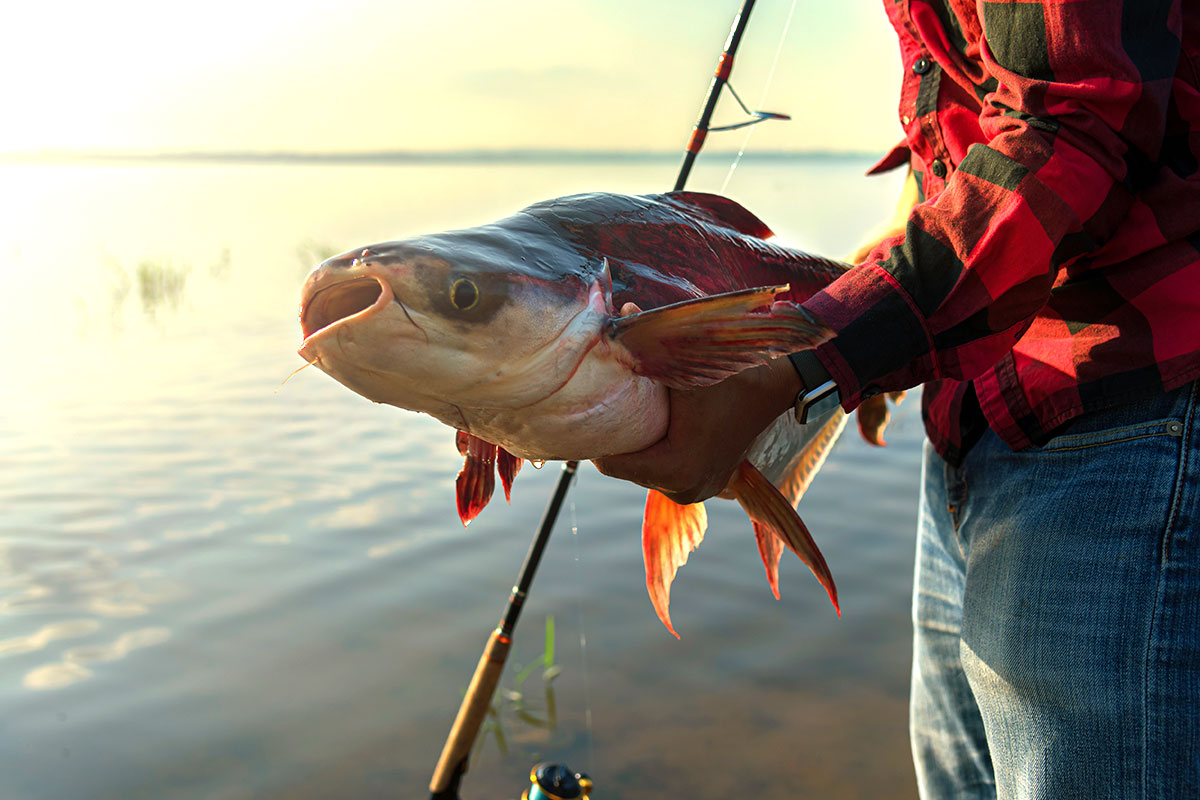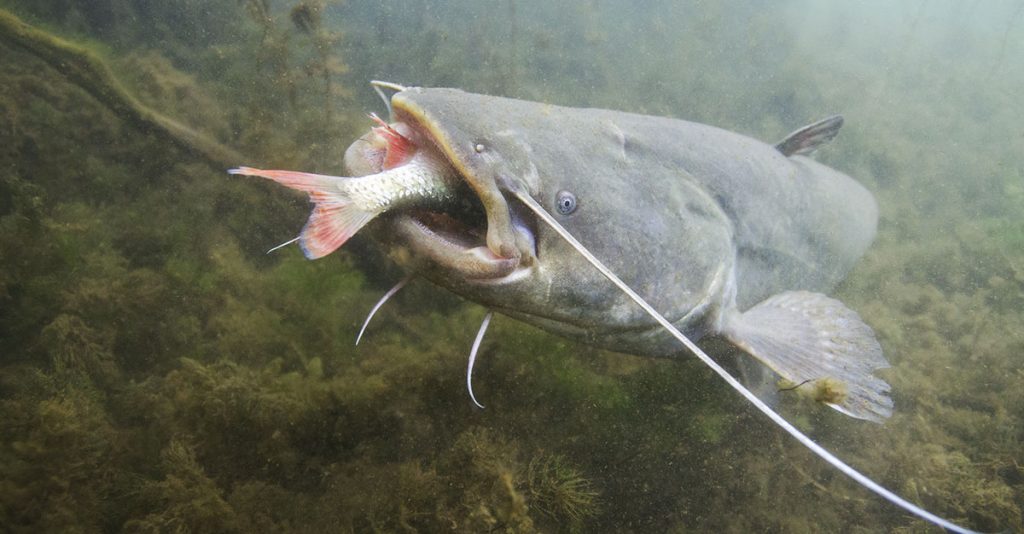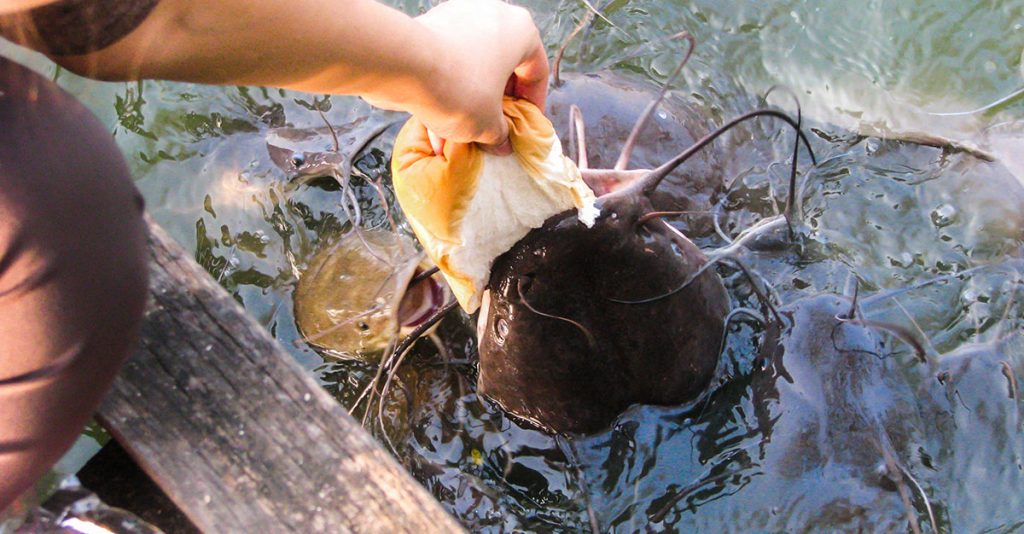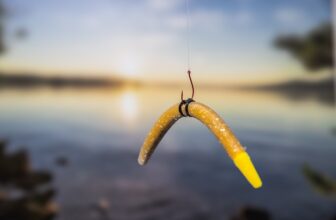
Catfish are among the most prevalent species of fish in North America and other parts of the world. They are mostly bottom-feeders that will take advantage of any type of dead creatures that sink down to the depths of any lake or river. However, a catfish’s diet might change a bit during the fall as the water temperature drops and they become a bit more active, so what do catfish eat?
Professional catfish anglers and guides know how to adapt their fishing strategies to catch catfish during this time of year, but amateur anglers might struggle with understanding what types of bait to use. Different baits and strategies will work well for some types of catfish and might totally flop when it comes to other catfish species.
In this article, we’ll cover the basics related to what catfish eat in the fall and also explain what types of bait are usually best during this season.
Fall Catfishing Overview
When it comes to catfishing in North America, there are three main species that most catfishing aficionados refer to as ‘the big three.’ These species include blue catfish, flathead, and channel catfish. Each one has a distinctly different look and behavior, as well as a vastly different diet through much of the year.
One of the first major mistakes anglers make when it comes to catfishing is to assume that one type of bait will work to catch any type of catfish at any time of year. This couldn’t be further from the truth and you might be surprised to learn that—even though they are mostly bottom-feeders—you’ll need to adapt your fall catfishing strategy much like you would for any other fish.
If you think in terms of other fish species, the same concepts usually apply when it comes to catching catfish in the fall. Focusing on areas where there are depth changes and structure are solid choices that will often pay off in the form of plentiful bites. The most important thing you can learn when it comes to fall catfish angling is knowing what these whiskered fish are likely to eat during this season.
What Do Catfish Eat in the Fall?
Catfish, much like any other creature in North America, will go from being somewhat lethargic to more active and aggressive feeders once the water temperatures begin to drop. This is because they are naturally reacting to the weather change and following their instincts, which tell them to eat and fatten themselves up for a long, cold winter. Many anglers find that catfish often bite much more during the fall than any other time of year if you happen to be using the right approach and the right bait or lure.
While the flathead catfish species is known to be more apt to eat live prey like bait fish, bluegill and other small fish species, blue and channel cats also become more likely to eat moving prey than they are in other times of the year. In fact, some anglers use catfishing strategies that involve throwing crankbaits and other motion-oriented lures during this time to catch catfish.
During the fall, channel cats typically eat anything from cut bait to live bait and even chicken livers or dough-based stinkbait. To summarize their diet during the autumn season, channel cats are not picky at all and will often eat anything they find. Blue cats generally prefer cut bait or live shad and other types of bait fish during the fall. They usually don’t seem to have a preference that favors live baits vs dead ones or cut bait during this time, but most catfish anglers tend to opt for live baits if possible.
Anyone who knows much about flathead catfish is well-aware that they almost always prefer live prey as opposed to dead, stinking prey that’s sitting motionless at the bottom or floating somewhere in the water column. This is because flathead catfish have slightly more developed forms of detecting movement in the water and finding live prey than blue and channel cats.
In short, if you’re fishing an area and are simply trying to catch any type of catfish that are likely to bite during the fall season, your best bet is usually to use live bait or cut bait as opposed to other types of catfish bait.
Water Temperature’s Effect on What Catfish Eat
It’s mostly understood that using baits that offer a more pungent, stinky smell tend to work during the summer when it comes to catching most types of catfish. This is true as the smell from stink bait, chicken liver, dead fish and other types of smelly bait will travel more easily through the water. Catfish are also able to better detect such smells when the water temperature is warmer, so summer catfish angling often involves the use of very strong-smelling types of bait.
When the water cools, however, catfish are more tuned in to detecting blood or movement instead of dead or decaying flesh. They use their whiskers and other areas near the head to detect the most subtle movements and vibrations in the water during the daytime and at night.
Best Catfish Baits for Fall Fishing
As we’ve mentioned, some of the best types of lures during the fall season for catfish are usually live minnows, bluegill, goldfish, trout, and virtually any other type of small bait fish that catfish are known to eat.
One of the newer types of bait fish that seem to work incredibly well for fall catfishing are known as ‘salty minnows’ or ‘salties.’ These small fish are copper brown and black in color and have been scientifically bred by biologists to serve as the perfect catfish bait. Salties are incredibly tough and known to survive for hours at a time when hooked through the back.
Most professional catfish anglers will opt for cut crappie, bluegill and other types of fish during the fall when fishing on rivers as the smell is going to drift along in the water current and attract fish to come and investigate. Instead of simply fishing with a weighted hook and bait, you might try letting your bait and boat drift along with the current. Some anglers like to gently twitch their bait at times to appeal to the catfish’s sense of feel when they are hunting.
It’s also not uncommon for catfish anglers to use crankbaits and other types of artificial lures during the fall that you might commonly expect to use for bass or walleye fishing. By slowly cranking a lure around the flats and areas where there are depth changes, you can often pick up bites from hungry catfish that are looking for unsuspecting prey.
Trolling is also a technique that produces bites from catfish during the fall. A lipless crankbait or one that closely resembles a crawfish sometimes draws a good amount of strikes from flathead catfish, as well as blue and channel cats.
Conclusion
By properly adapting your catfishing strategy for the fall season, you can have quite a bit of success when it comes to catching a high number of catfish or trophy-sized cats. Remember that catfish are more likely to be searching for moving prey during the fall season, so using live bait or adding a bit of motion and movement to your cut bait is often a winning strategy. Seasoned catfish anglers often point to the fall as the best time of the year to fish since catfish will be looking to eat anything they can find in preparation for the cold winter ahead.








